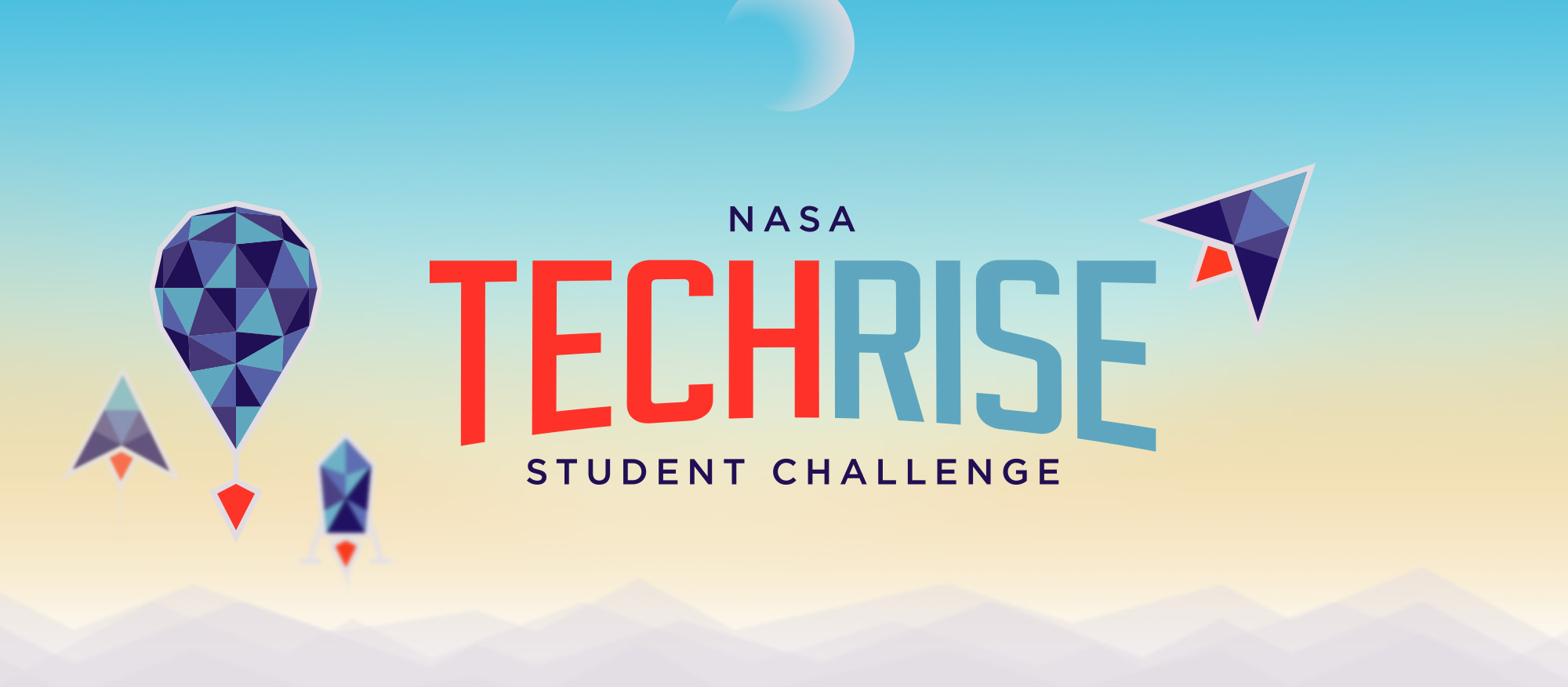
YOUR CHALLENGE IS:
DESIGN AN EXPERIMENT TO TEST ON A SUBORBITAL FLIGHT
Expected to Open August 2025
NASA TechRise 2024-25 winning teams are currently building their experiments. The next NASA TechRise Student Challenge is expected to open for entries in August 2025. Pre-register now to receive challenge updates!
The NASA TechRise Student Challenge empowers teams of sixth to 12th-grade students to design, build, and launch experiments on NASA-supported test flights. Guided by an educator, student teams affiliated with U.S. public, private, and charter schools can submit ideas for experiments to test on a suborbital flight.
Winning teams will be selected to build their proposed experiment. Each winning team will be awarded:
- $1,500 to build their experiment
- A flight box in which to build it
- An assigned spot to test their experiment on a NASA-sponsored flight
- Technical support during the experiment build phase from Future Engineers advisors, who will help students learn the skills they need to turn their experiment idea into reality.
No experience is needed to participate in the NASA TechRise Challenge!
LAUNCHING THE INNOVATORS OF TOMORROW
NASA's Flight Opportunities program is leading the NASA TechRise Challenge, which is administered by Future Engineers. Flight Opportunities rapidly demonstrates technologies for space exploration, discovery, and the expansion of space commerce through suborbital testing with industry flight providers. The program matures capabilities needed for NASA missions and commercial applications while strategically investing in the growth of the U.S. commercial spaceflight industry. These flight tests take technologies from ground-based laboratories into relevant environments to increase technology readiness and validate feasibility while reducing the costs and technical risks of future missions. NASA’s Flight Opportunities program is funded by NASA’s Space Technology Mission Directorate (STMD) and managed at NASA’s Armstrong Flight Research Center in Edwards, California.
Contact us
Thank you for your interest in contacting Future Engineers. We look forward to connecting with you!
General Inquiries
support@futureengineers.orgSponsorship Inquiries
sponsor@futureengineers.org
